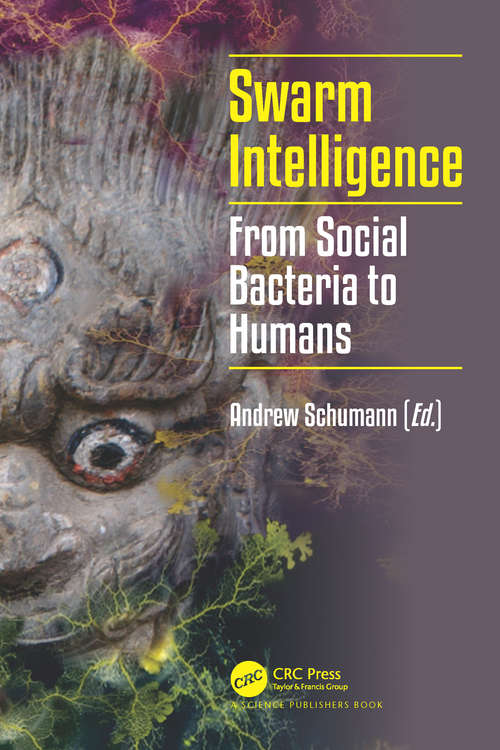Swarm Intelligence: From Social Bacteria to Humans
By:
Sign Up Now!
Already a Member? Log In
You must be logged into Bookshare to access this title.
Learn about membership options,
or view our freely available titles.
- Synopsis
- The notion of swarm intelligence was introduced for describing decentralized and self-organized behaviors of groups of animals. Then this idea was extrapolated to design groups of robots which interact locally to cumulate a collective reaction. Some natural examples of swarms are as follows: ant colonies, bee colonies, fish schooling, bird flocking, horse herding, bacterial colonies, multinucleated giant amoebae Physarum polycephalum, etc. In all these examples, individual agents behave locally with an emergence of their common effect. An intelligent behavior of swarm individuals is explained by the following biological reactions to attractants and repellents. Attractants are biologically active things, such as food pieces or sex pheromones, which attract individuals of swarm. Repellents are biologically active things, such as predators, which repel individuals of swarm. As a consequence, attractants and repellents stimulate the directed movement of swarms towards and away from the stimulus, respectively. It is worth noting that a group of people, such as pedestrians, follow some swarm patterns of flocking or schooling. For instance, humans prefer to avoid a person considered by them as a possible predator and if a substantial part of the group in the situation of escape panic (not less than 5%) changes the direction, then the rest follows the new direction, too. Some swarm patterns are observed among human beings under the conditions of their addictive behavior such as the behavior of alcoholics or gamers. The methodological framework of studying swarm intelligence is represented by unconventional computing, robotics, and cognitive science. In this book we aim to analyze new methodologies involved in studying swarm intelligence. We are going to bring together computer scientists and cognitive scientists dealing with swarm patterns from social bacteria to human beings. This book considers different models of simulating, controlling, and predicting the swarm behavior of different species from social bacteria to humans.
- Copyright:
- 2020
Book Details
- Book Quality:
- Publisher Quality
- Book Size:
- 184 Pages
- ISBN-13:
- 9780429647604
- Related ISBNs:
- 9780367535957, 9780429028618, 9780367137939
- Publisher:
- CRC Press
- Date of Addition:
- 09/11/23
- Copyrighted By:
- Taylor
- Adult content:
- No
- Language:
- English
- Has Image Descriptions:
- No
- Categories:
- Nonfiction, Science, Computers and Internet, Mathematics and Statistics
- Submitted By:
- Bookshare Staff
- Usage Restrictions:
- This is a copyrighted book.
- Edited by:
- Andrew Schumann
